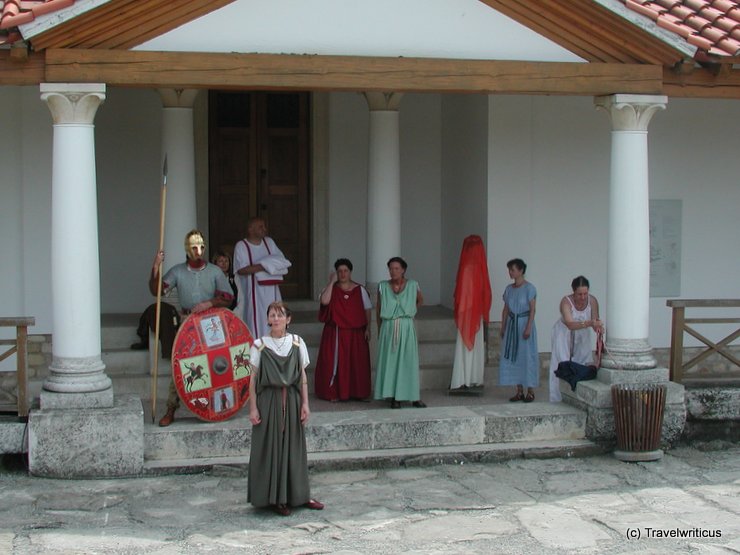
Fashion shows are another appreciated event during Carnuntum festivals. During such presentations, people hear about different dresses in Roman history. That way, the audience also learns how many steps are needed to put on a traditional toga.
Browse through your travel destination!

Fashion shows are another appreciated event during Carnuntum festivals. During such presentations, people hear about different dresses in Roman history. That way, the audience also learns how many steps are needed to put on a traditional toga.

This Socialist Realist fresco forms a decoration in the hall of the Bratislava Main Railway Station (Bratislava hlavná stanica). The mural was created by František Gajdoš in 1960. An intriguing detail is the small sputnik at the upper edge of the depiction.
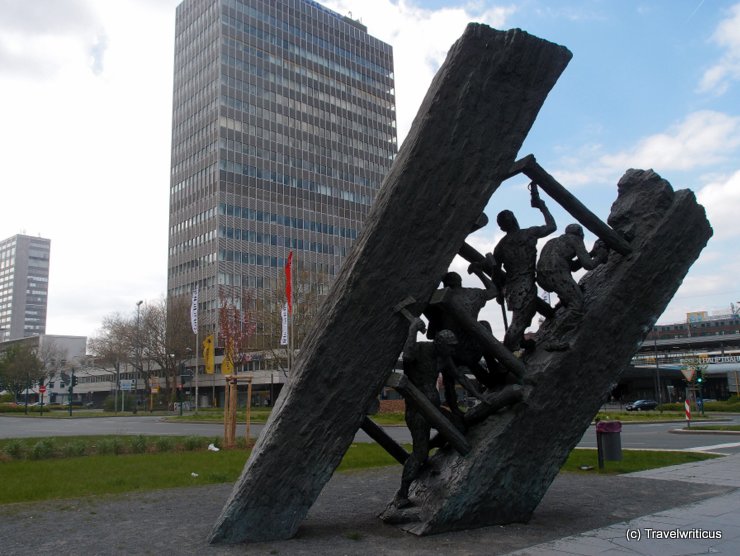
After arriving at Essen Main Station, train travellers find this sculpture near the station hall. The work “Steile Lagerung” by sculptor Max Kratz reminds us that Essen was one of the largest mining towns in Europe for a certain period.
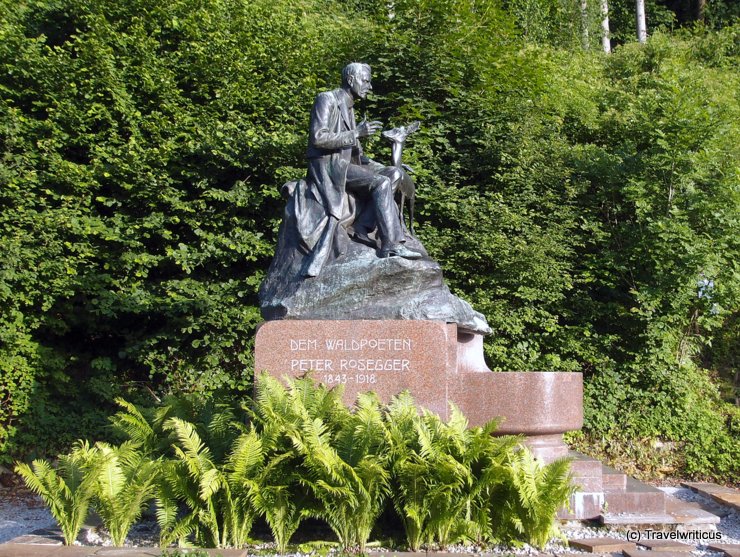
This monument to Peter Rosegger stands in Kapfenberg. He became famous as a regional writer. The inscription mentions him as a poet of the forest, which probably refers to the fact that he grew up in the nearby woodland and wrote much about life there.

This steam locomotive class 324 stands at the Sopron Station. It saw its construction at the MÁVAG (Budapest) in 1910. The loco finished its career in the Hungarian-Austrian railway company GYSEV in 1981. At that time, it bore the number GYSEV 324 1518.
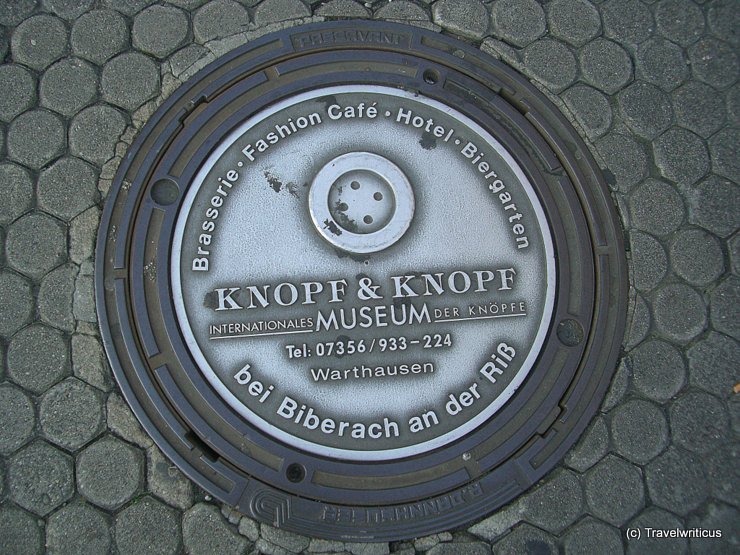
In Mannheim, I came across an interesting use of a manhole cover. It advertises a Buttons Museum (Knopf & Knopf Museum). You’ll find the museum in a former railway station building in Warthausen.
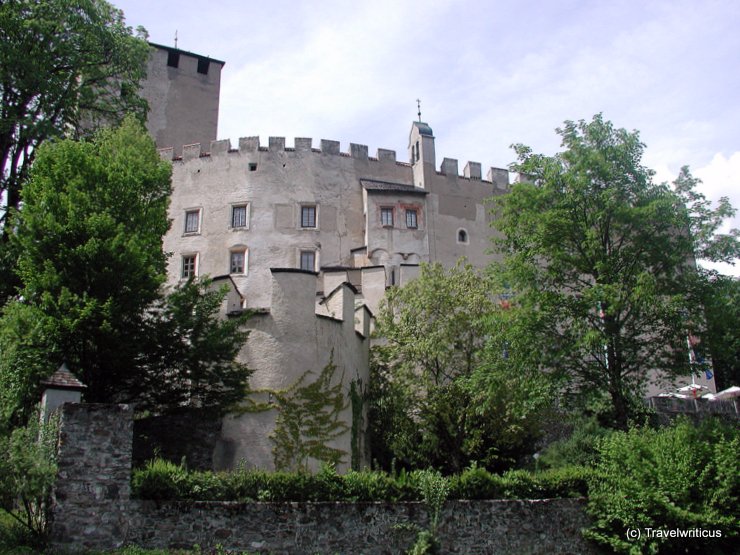
Bruck Castle (Schloss Bruck) is a short walk from the town of Lienz. From afar, it looks like a real knight’s castle. Inside the chapel of the 13th-century castle, visitors find magnificent frescos created by Simon von Taisten.

Bogenšperk Castle (Grad Bogenšperk) was the home of the natural historian and polymath Johann Weichard Valvasor (1641-1693). He became famous for publishing several books about topics like the Karst or the history of Carniola.
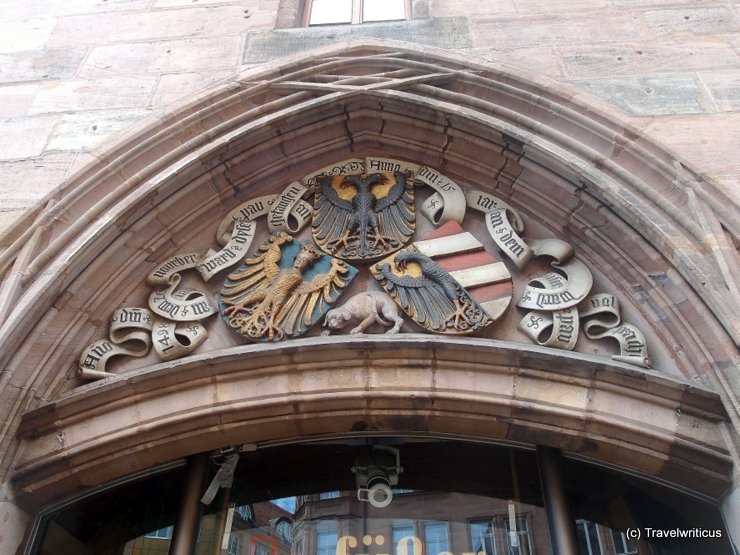
On the left side, you see the Great Emblem (Große Wappen). On the right side, you see the Minor Emblem (Kleine Wappen) of Nuremberg. The left one is generally used by administrative bodies, whereas the right one is used by some companies.
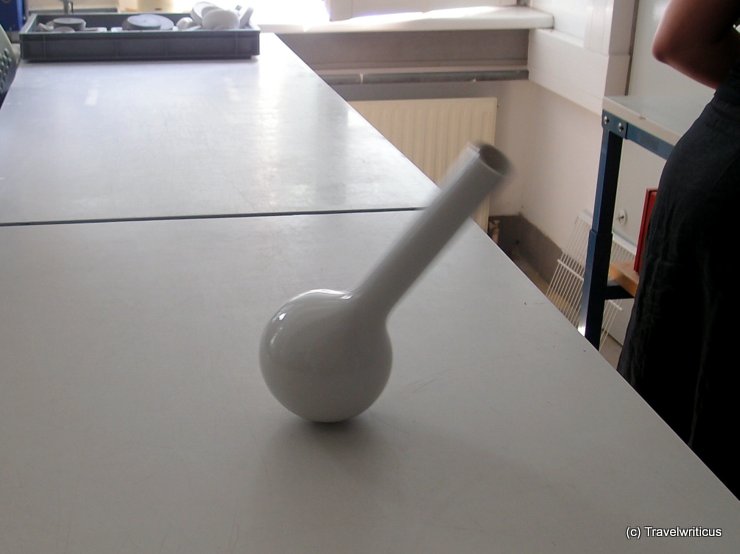
This cute porcelain vase was exhibited during a guided tour at the Viennese Porcelain Manufacture Augarten. Austrian designer Philipp Bruni created this piece, which is named “Pinocchio” (mind the long nose!). Fun detail: The vase can not topple down.

Together with the Štěpnický Pond, the Ulický Pond surrounds the UNESCO World Heritage Site of Telč. During a walk, visitors experience the steeples of the churches Kostel svatého Jakuba Staršího and Kostel Jména Ježíš reflecting in its water.
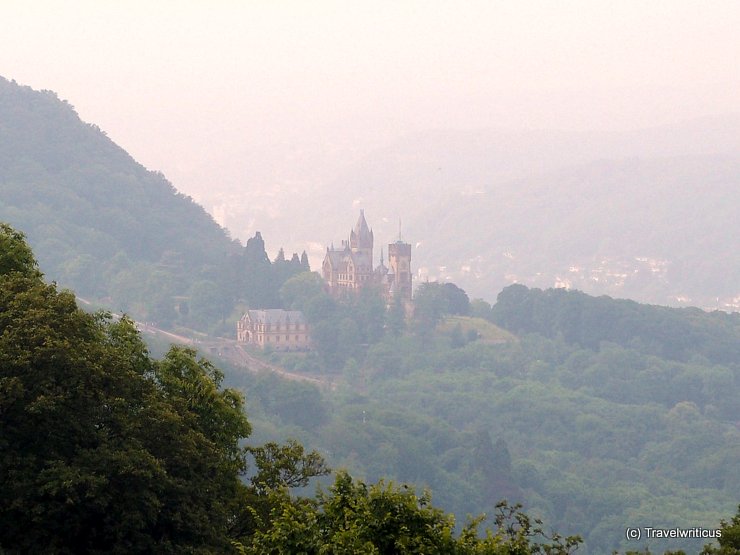
Drachenburg Castle (Schloss Drachenburg) is a late 19th-century building in the style of a fairy-tale palace. Its founder was Baron Stephan von Sarter, a broker and banker. You have the depicted view from the terrace of the nearby Petersberg Grand Hotel.